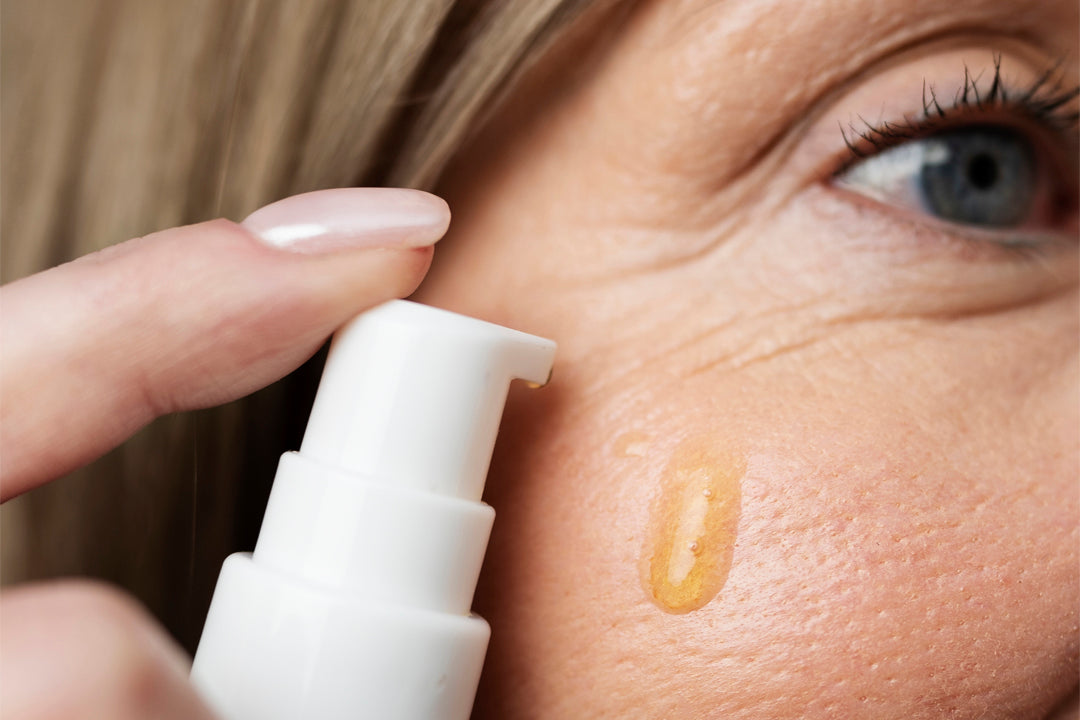
Tips for a healthy fall: glowing and hydrated skin.
Why autumn is the best time to reset
After summer, skin often suffers from a damaged barrier , dehydration, and uneven skin tone . With the decrease in direct sunlight and humidity, fall provides the ideal setting to repair , even out skin tone, and revive transformative active ingredients.
What happens to your skin in autumn (biology, plain and simple)
-
Less lipid barrier → increases transepidermal water loss ( TEWL ). Result: tightness and tenderness.
-
Collagen and elastin : Their synthesis declines with age and accumulated sun damage worsens them (fine wrinkles, loss of firmness).
-
Irregular melanogenesis : post-summer brings spots or diffuse “shadows”.
-
Oxidative stress (UV + pollution) → dull tone, rough texture.
Practical translation: if you rehydrate and repair the barrier, and dose exfoliation/retinoid + daily protection , you regain comfort, light and uniformity .
Fall Facial Routine: What to Use and Why
Tomorrow (AM)
-
Gentle cleansing (gel/cream without aggressive sulfates).
-
Antioxidants (vitamin C, niacinamide or ferulic acid) → support luminosity and urban defense.
-
Smart hydration (hyaluronic acid + glycerin/panthenol).
-
Barrier cream (ceramides + cholesterol + fatty acids) if you notice tightness.
-
SPF 50+ sun protection every day (ideal with pigment if you're worried about spots).
Night (PM)
-
Cleanse (double if you wear heavy makeup/SPF).
-
Renewal (choose and alternate, not all at once):
-
Gentle AHAs (glycolic/mandelic/lactic) 1–3 nights/week for texture and tone.
-
Retinoid (retinol/retinal) 2–4 nights/week for collagen and evenness.
-
-
Calming serum/niacinamide if there is redness or reactive skin.
-
Nourishing cream (ceramides, squalane, light butters).
Forgotten areas that reveal age: lips (repair balm), neck/décolletage and hands (same antioxidant + SPF combo).
Body and mind: habits that give you energy (and show on your skin)
Exercise that adds
-
Strength 2–3 times/week : Improves muscle tone, posture, and metabolism; helps visually “fill out” the skin surface.
-
Moderate cardio (brisk walking/zone 2): better perfusion → better oxygenation and natural “glow”.
Restful sleep
-
7–8 hours at regular times. Skin recovers best at night. Sleep hygiene: dim lighting, screens off 60 minutes before, caffeine until mid-afternoon.
Autumn diet (Mediterranean pattern)
-
Protein in every meal (fish, eggs, legumes) for tissue synthesis.
-
Good fats (EVOO, nuts, seeds).
-
Colors on the plate (polyphenols and carotenoids) → antioxidant support.
-
Water and broths/infusions: systemic hydration = juicier skin .
-
Limit alcohol and sugars → less glycation (stiffens collagen).
Stress management = more stable skin
-
10 minutes a day of breathing, journaling, or meditation. Chronic stress weakens the barrier and worsens redness.
Self-esteem and care
-
Short morning/evening ritual: Taking 3–4 meaningful steps strengthens adherence and self-image ; what you feel is reflected in your skin.
Express change of season checklist
-
SPF 50+ for all year round (ideal with pigment if there is melasma).
-
Antioxidant day serum.
-
Moisturizer (HA/glycerin) + ceramide cream if tightness occurs.
-
Mild AHA 1–2×/week + progressive retinoid .
-
Lip balm and hand cream.
-
Strength + sleep + water plan.
Quick FAQ
Should I still use sunscreen in the fall? Yes. UVA (photoaging) is present year-round.
Can I use AHAs and retinoids at the same time? Alternate nights to avoid irritation.
When do I see results? Hydration and comfort: days ; tone/pores/fine lines: weeks of consistency.
Warning : Informational content. If you are pregnant/breastfeeding or have a skin condition, consult your healthcare professional before using retinoids or other active ingredients.


